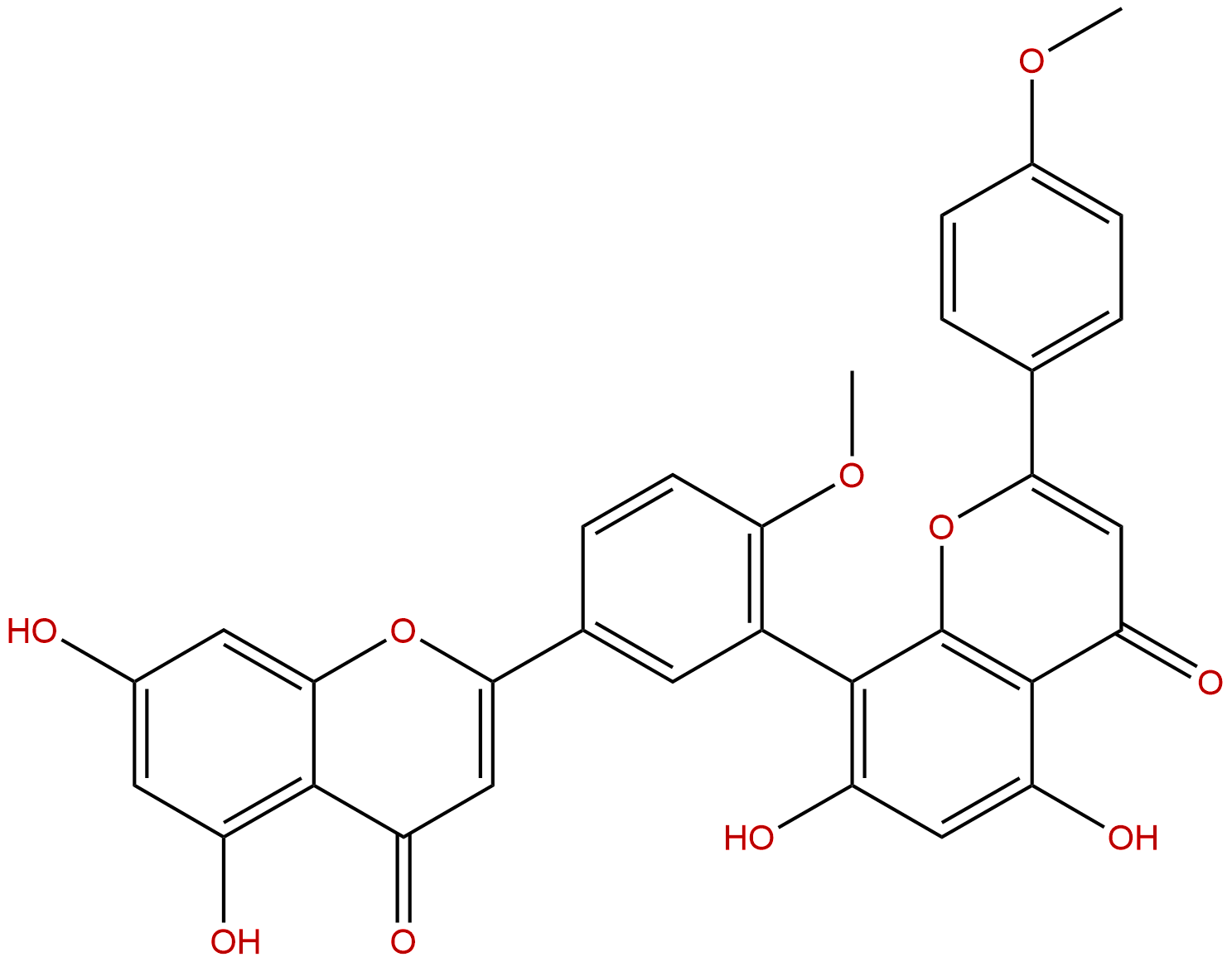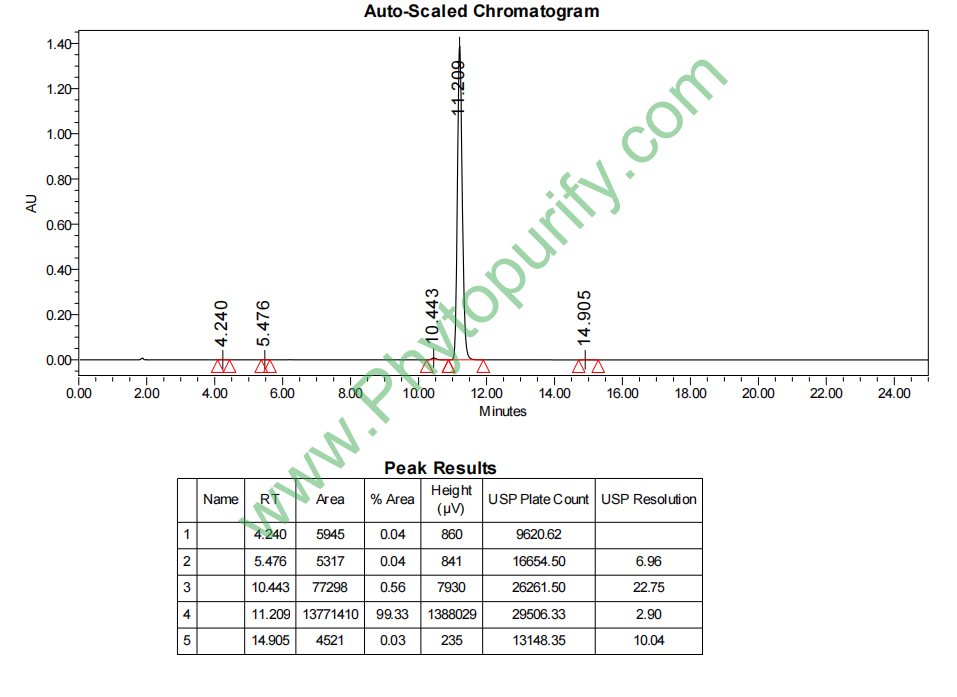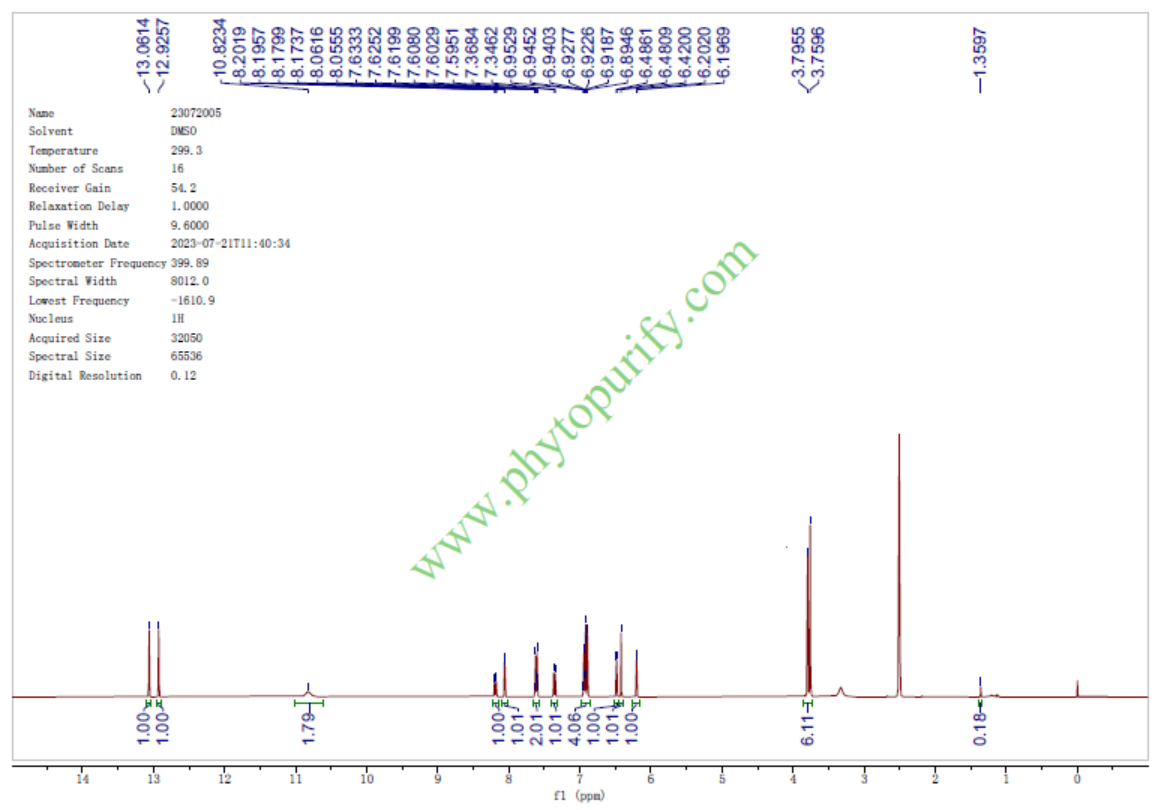
IsoginkgetinCAS No.:548-19-6
|
||||||||||
 |
|
|
||||||||

| Catalogue No.: | BP0784 |
| Formula: | C32H22O10 |
| Mol Weight: | 566.518 |
Product name: Isoginkgetin
Synonym name:
Catalogue No.: BP0784
Cas No.: 548-19-6
Formula: C32H22O10
Mol Weight: 566.518
Botanical Source: Ginkgo biloba L.
Physical Description:
Type of Compound: Flavonoids
Purity: 95%~99%
Analysis Method: HPLC-DAD or/and HPLC-ELSD
Identification Method: Mass, NMR
Packing: Brown vial or HDPE plastic bottle
Storage: Store in a well closed container, protected from air and light. Put into refrigerate or freeze for long term storage.
The product could be supplied from milligrams to grams
Inquire for bulk scale.
Description:
Isoginkgetin is a MMP-9 inhibitor, also a pre-mRNA splicing inhibitor with IC 50 of 30 uM. Isoginkgetin can up-regulate adiponectin secretion with potency comparable to that of rosiglitazone, a known modulator of adiponectin production. Isoginkgetin has anti-tumor activity, it can inhibit tumor cell invasion by regulating phosphatidylinositol 3-kinase/Akt-dependent matrix metalloproteinase-9 expression.
References:
J Biol Chem. 2008 Nov 28;283(48):33147-54.
The biflavonoid isoginkgetin is a general inhibitor of Pre-mRNA splicing.
Membrane-permeable compounds that reversibly inhibit a particular step in gene expression are highly useful tools for cell biological and biochemical/structural studies. In comparison with other gene expression steps where multiple small molecule effectors are available, very few compounds have been described that act as general inhibitors of pre-mRNA splicing.
METHODS AND RESULTS:
Here we report construction and validation of a set of mammalian cell lines suitable for the identification of small molecule inhibitors of pre-mRNA splicing. Using these cell lines, we identified the natural product Isoginkgetin as a general inhibitor of both the major and minor spliceosomes. Isoginkgetin inhibits splicing both in vivo and in vitro at similar micromolar concentrations. It appears to do so by preventing stable recruitment of the U4/U5/U6 tri-small nuclear ribonucleoprotein, resulting in accumulation of the prespliceosomal A complex. Like two other recently reported general pre-mRNA splicing inhibitors, Isoginkgetin has been previously described as an anti-tumor agent.
CONCLUSIONS:
Our results suggest that splicing inhibition is the mechanistic basis of the anti-tumor activity of Isoginkgetin. Thus, pre-mRNA splicing inhibitors may represent a novel avenue for development of new anti-cancer agents.
Traditional Chinese Drug Research & Clinical Pharmacology, 1993(2):12-4.
Effect of Isoginkgetin on Scavenge of Oxygen Free Radical in Anoxic Rats.
METHODS AND RESULTS:
Chemiluminescence method and modified nitrous acid method were applied to determine the concentration of superoxide anion radical in plasma and erythrocyte of rats and the activity of superoxide dismutase(SOD) respectively. The results showed that Isoginkgetin (0.3mg/kg ip for 3d) could reduce the level of O2·- in plasma and erythroeyte (p<0.01) and sometimes increase the activity of SOD in anoxic rats, the action being stronger than aspirin.
HPLC of Isoginkgetin

HNMR of Isoginkgetin
